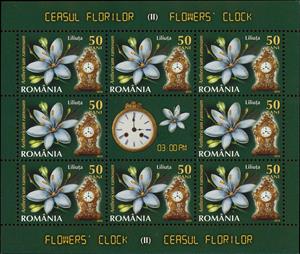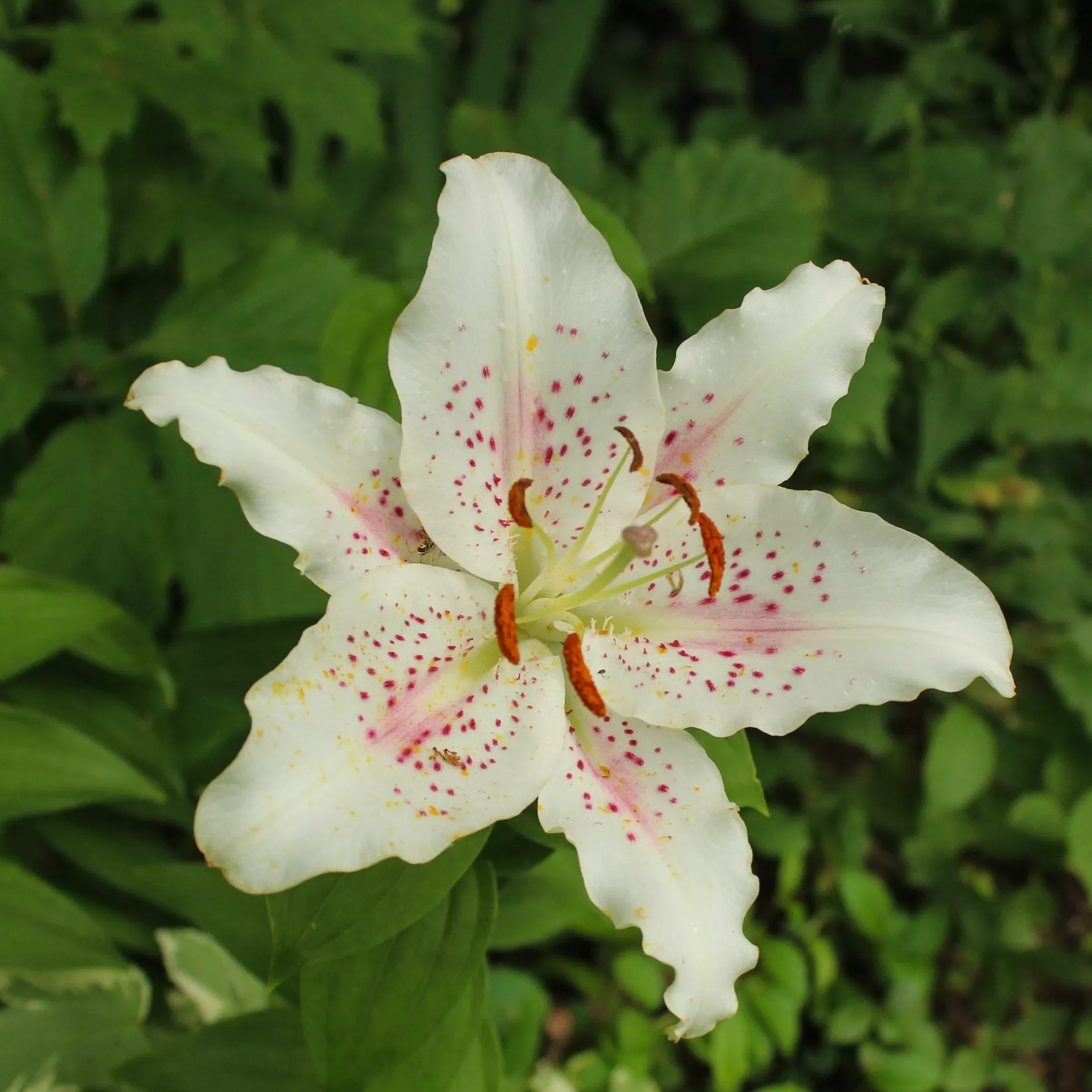Mini Sheet: Branched St Bernard's-lily (Anthericum ramosum L.) MS (Romania 2013)
Branched St Bernard's-lily (Anthericum ramosum L.) MS (Romania 2013)
21 June (Romania ) within release Flowers’ Clock (II) goes into circulation Mini Sheet Branched St Bernard's-lily (Anthericum ramosum L.) MS face value 8*50 Romanian ban
| Mini Sheet Branched St Bernard's-lily (Anthericum ramosum L.) MS in catalogues | |
|---|---|
| Michel: | Mi: RO 6715KB |
| Stamp Number: | Sn: RO 5454a |
Mini Sheet is horizontal format.
Also in the issue Flowers’ Clock (II):
- Stamp - Branched St Bernard's-lily (Anthericum ramosum L.) face value 50;
- Stamp - Marvel of Peru (Mirabilis jalapa L.) face value 1.20;
- Stamp - Jimson weed (Datura stramonium L.) face value 1.40;
- Stamp - White campion (Silene latifolia Poir.) face value 3;
- Stamp - Winged Tobacco (Nicotiana alata Link & Otto) face value 3.10;
- Stamp - Common evening primrose (Oenothera biennis L.) face value 4.70;
- Stamp - Branched St Bernard's-lily (Anthericum ramosum L.) face value 50;
- Stamp - Marvel of Peru (Mirabilis jalapa L.) face value 1.20;
- Stamp - Jimson weed (Datura stramonium L.) face value 1.40;
- Stamp - White campion (Silene latifolia Poir.) face value 3;
- Stamp - Winged Tobacco (Nicotiana alata Link & Otto) face value 3.10;
- Stamp - Common evening primrose (Oenothera biennis L.) face value 4.70;
- Souvenir Sheet - Flowers' Clock (II) SS face value 13.90;
- Mini Sheet - Common evening primrose (Oenothera biennis L.) MS face value 8*4.70;
- Mini Sheet - Winged Tobacco (Nicotiana alata Link & Otto) MS face value 8*3.10;
- Mini Sheet - Marvel of Peru (Mirabilis jalapa L.) MS face value 8*1.20;
- Mini Sheet - Jimson weed (Datura stramonium L.) MS face value 8*1.20;
- Mini Sheet - White campion (Silene latifolia Poir.) MS face value 8*3;
- Mini Sheet - Branched St Bernard's-lily (Anthericum ramosum L.) MS face value 8*50;
Mini Sheet Branched St Bernard's-lily (Anthericum ramosum L.) MS it reflects the thematic directions:
A clock or chronometer is a device that measures and displays time. The clock is one of the oldest human inventions, meeting the need to measure intervals of time shorter than the natural units such as the day, the lunar month, and the year. Devices operating on several physical processes have been used over the millennia.
A flower, sometimes known as a bloom or blossom, is the reproductive structure found in plants that are floral (plants of the division Magnoliophyta, also called angiosperms). The biological function of a flower is to effect reproduction, usually by providing a mechanism for the union of sperm with eggs. Flowers may facilitate outcrossing (fusion of sperm and eggs from different individuals in a population) or allow selfing (fusion of sperm and egg from the same flower). Some flowers produce diaspores without fertilization (parthenocarpy). Flowers contain sporangia and are the site where gametophytes develop. Many flowers have evolved to be attractive to animals, so as to cause them to be vectors for the transfer of pollen. After fertilization, the ovary of the flower develops into fruit containing seeds. In addition to facilitating the reproduction of flowering plants, flowers have long been admired and used by humans to beautify their environment, and also as objects of romance, ritual, religion, medicine and as a source of food.
Lilium (/ˈlɪliəm/ LIL-ee-əm) is a genus of herbaceous flowering plants growing from bulbs, all with large and often prominent flowers. Lilies are a group of flowering plants which are important in culture and literature in much of the world. Most species are native to the Northern Hemisphere and their range is temperate climates and extends into the subtropics. Many other plants have "lily" in their common names, but do not belong to the same genus and are therefore not true lilies. True lilies are known to be highly toxic to cats
Flora is the plant life occurring in a particular region or time, generally the naturally occurring or indigenous—native plant life. The corresponding term for animal life is fauna. Flora, fauna and other forms of life such as fungi are collectively referred to as biota. Sometimes bacteria and fungi are also referred to as flora, as in the terms gut flora or skin flora.




